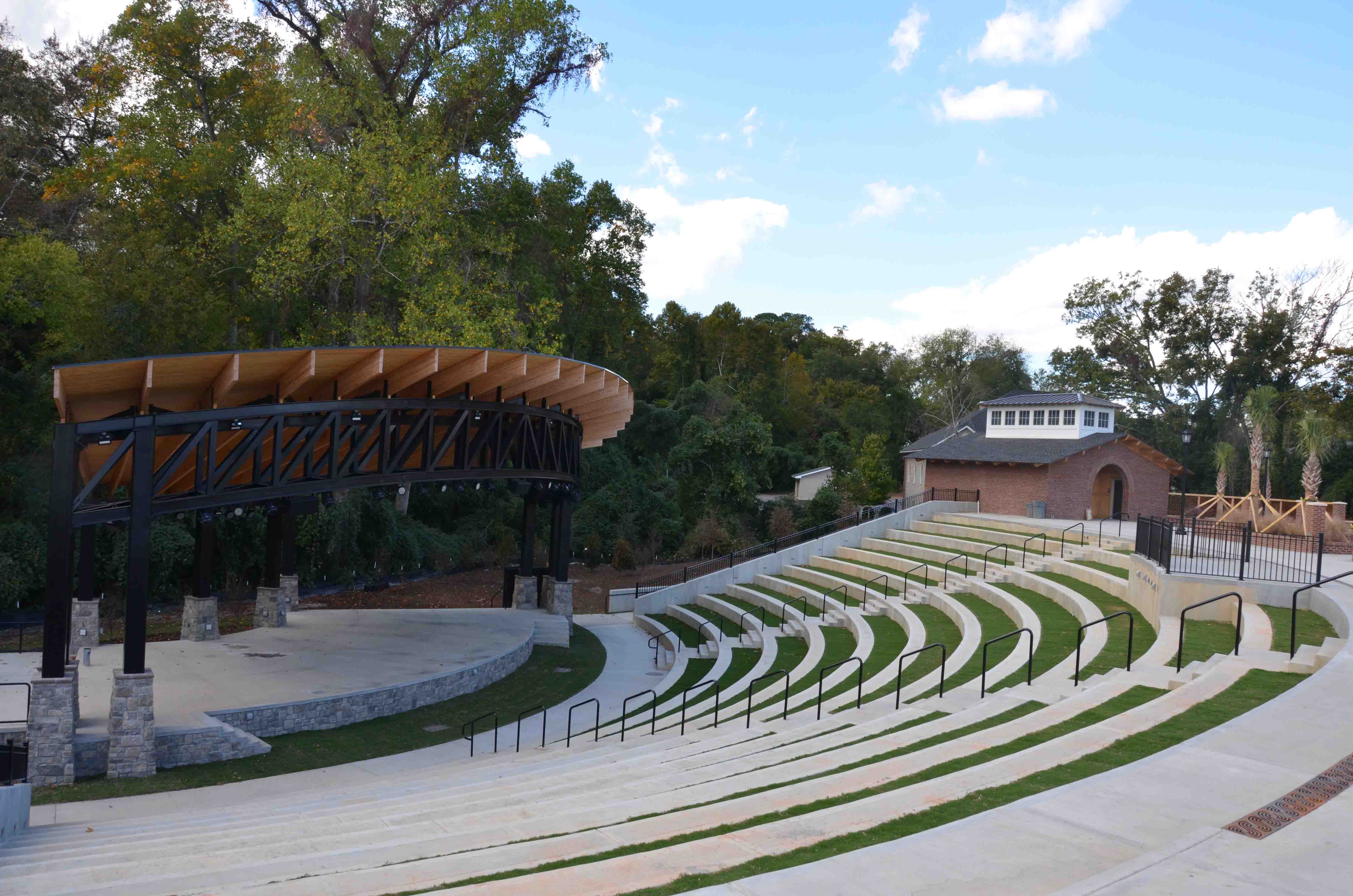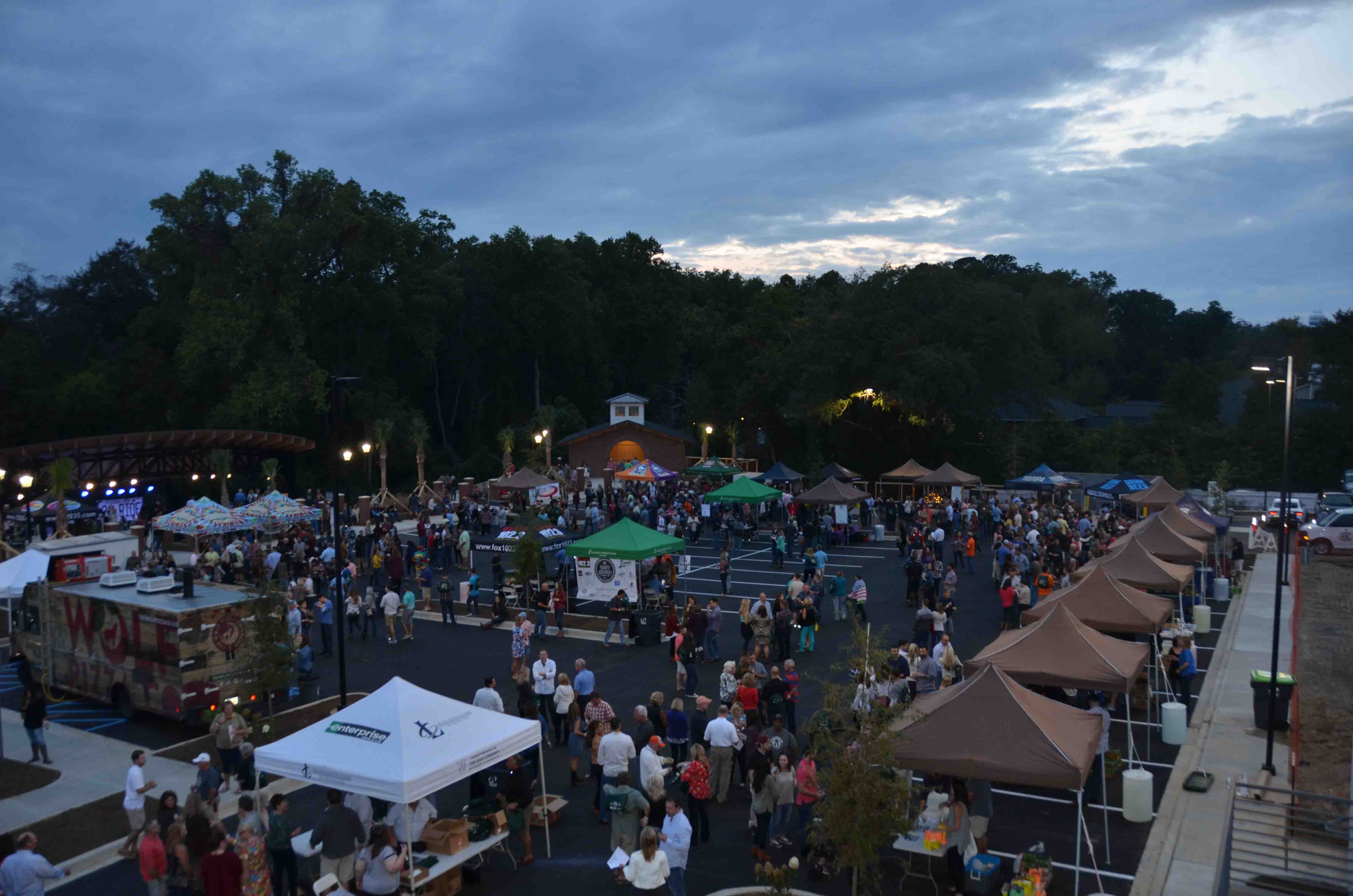A skilled fisherman knows that to attract and ultimately land a trophy fish, you must use the right lures. Attracting, landing and retaining a new business is very similar to fishing for trophy specimens. So how can cities increase the attractiveness of its lures?


The Lexington Icehouse Amphitheater was supported by a tax increment finance district
of seven local taxing jurisdictions, including the Town of Lexington. The amphitheater
has become a popular space for public events. Photos: Town of Lexington.
Business prospects want a location that offers strategic business advantages and the lowest possible financial risk. In many cases, areas targeted for economic development lack these ideal conditions.
In these situations redevelopment activity is unlikely to occur without sufficient financial incentives. Performance-based incentives rebate a portion of taxes and fees to development projects that meet public purpose goals or performance thresholds set by the governmental entity. Accelerating redevelopment activity through performance-based incentives allows both the developer and city to win.
Performance-based incentives have several benefits: The public benefit is not speculative; the risk to the entity offering the incentive is minimal; compliance with performance standards occurs before payment of the incentive credit or rebate; and failure to meet performance standards in the future terminates the incentive. South Carolina cities have several performance-based incentives that have proven to be successful tools.
Tax Credits
Tax credits are one of the most commonly used forms, and many of them can be combined to maximize investor benefit and, for larger projects, can even be sold to increase developer equity. These credits fall into two categories: historical rehabilitation and special use credits.
The federal government offers a Historic Rehabilitation Tax Credit, which allows a federal income tax credit for developers rehabilitating buildings that are listed on the National Register of Historic Places or contribute to a National Register historic district. The federal income tax credit is equal to 20 percent of eligible rehabilitation expenses.
The State Historic Preservation Office of the S.C. Department of Archives and History reviews the rehabilitation plans to ensure they comply with the U.S. Secretary of the Interior's Standards for Rehabilitation.
In South Carolina, a developer approved for the federal tax credit automatically qualifies for a corresponding 10 - 25 percent credit on state income taxes. Combined federal and state credits can offset as much as 30 - 45 percent of the cost of eligible rehabilitation expenses.
To provide an incentive for the rehabilitation, renovation, and redevelopment of underused buildings, the S.C. General Assembly passed tax credits for challenging properties, including abandoned buildings, empty textile mills or sites and vacant big box stores.
While these incentives have different eligibility requirements, all of them offer an option of a 25 percent local property tax or state income tax credit, ranging from 10 to 25 percent of eligible rehabilitation expenses. The property tax option is available at both the city and county levels if each local government adopts an ordinance authorizing the credit. The developer decides which one to take, the state income or property tax credit.
The Bailey Bill
In addition to the historical and special use credits, cities and counties in South Carolina can adopt an ordinance enacting a special property tax assessment, commonly referred to as the Bailey Bill assessment.
For no more than 20 years, the local government can lock in a special tax assessment based on the property's fair market value before rehabilitation. The abated value is the difference between the fair market value of the building at the start of renovation and the fair market value of the building after renovation. The adoption of identical city and county ordinances maximizes the value of the incentive and is a recommended best practice.
Learn more about these incentives. The SC Municipal Attorneys Association will feature a session, "The Wonderful World of Economic Development Incentives," at its annual meeting on December 1.
